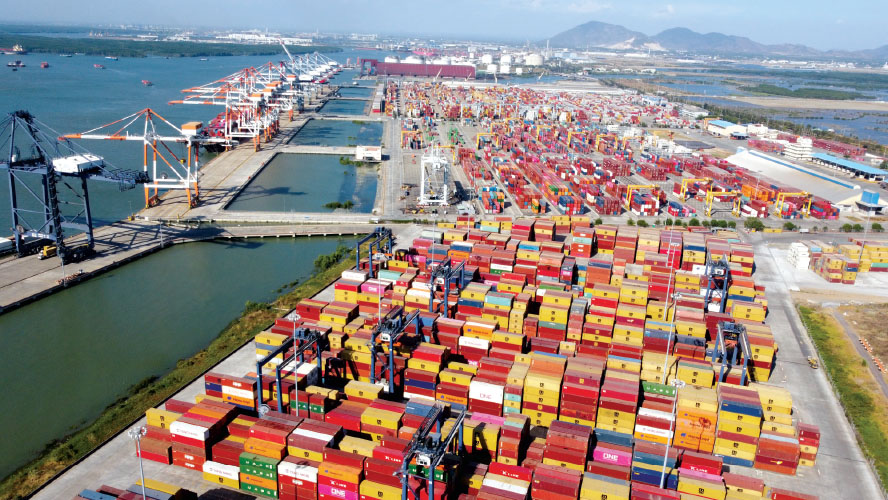Agricultures, Foods, News & Event
Trade is on the rebound
Vietnam’s trade sector has recently recorded a recovery, production activities have also improved, accordingly, exports will increase in 2024 when demand returns, helping Vietnam grow stronger.

In the report “Vietnam At A Glance: Light at the End of the Tunnel” released by HSBC Global Research, positive signs of Vietnam’s production and trade activities were noted.
After a difficult first half of the year, Vietnam’s economy is seeing light at the end of the tunnel. Growth at the end of the third quarter was quite good at 5.3%, far exceeding market expectations (HSBC: 4.8%; Bloomberg: 5.0%; Previous: 4.1%). In the context of many challenges, Vietnam still seems to be on a strong recovery path.
Data from the General Department of Customs records that the total import-export turnover of the country by the end of September 2023 reached nearly 500 billion USD, of which exports reached 258.97 billion USD, down 8.5% over the same period last year. Last year, the trade balance was in surplus of nearly 22 billion USD.
Merchandise exports in September 2023 alone reached 31.41 billion USD, although down 4.1% compared to the previous month, but recorded as the third consecutive month exceeding the threshold of 30 billion USD.
“What surprised us the most was the recovery in Vietnam’s manufacturing sector. Although it is still too early to consider this a significant recovery in the global trade cycle, Vietnam’s trade sector has recently recorded a recovery,” HSBC’s report said.
Exports saw growth for the first time in 6 months, helping to ease the severe export decline from double-digit levels in the first 6 months of the year to less than 2% year-on-year in the third quarter.
Although the export weakness still remains in most industries, the bright spots are computers, transportation vehicles and spare parts, and the agricultural product group grew quite well.
Vietnam’s exports to major trading partners such as the US, EU, Japan, and Korea are still decreasing, but the rate of decline has slowed down, while the second largest market, China, achieved positive growth of 2. 1% after 9 months with 42.2 billion USD, largely thanks to the impressive growth of agricultural products.
Although China only accounts for 15% of Vietnam’s total export turnover, more than 20% of Vietnam’s agricultural exports are shipped to China, from fruits and rice to cashews and coffee.
In particular, China’s demand for tropical fruits, including durian, dragon fruit and jackfruit, has increased rapidly in the past two years, with Vietnam being the main beneficiary along with Thailand.
In that context, the recent continuous price increase in the global rice market has boosted Vietnam’s rice exports.
The outlook for 2024 is brighter, but exports still pose risks. Vietnam has a high economic openness so it also depends heavily on exports. In case the main export markets such as the US, Europe, and China recover less than forecasts at this time, they will reduce imports. Therefore, if world demand is weaker, it will affect Vietnam’s export growth pillar, according to experts.
A recent report by the Asian Development Bank (ADB) also forecasts that import-export growth is expected to return to 5.0% this year and next year, with the recovery of demand. world. Strong trade activity will help maintain a current account surplus in 2023 estimated at 3.0% of GDP.
“As production activities recover and imports of input materials for production increase, the current account balance is expected to decrease to 2.0% of GDP in 2024,” the ADB Report said.
Source: https://baodautu.vn/thuong-mai-tren-da-hoi-phuc-d200714.html

